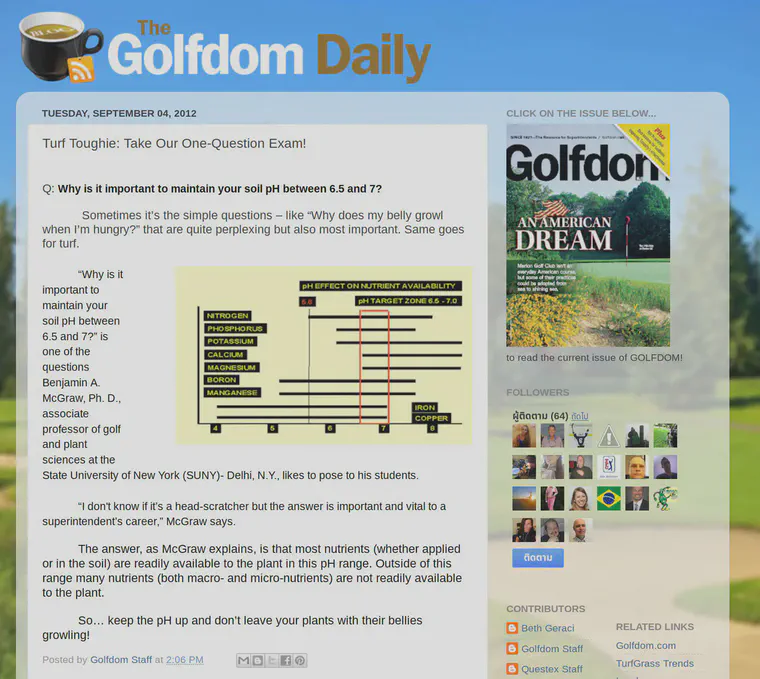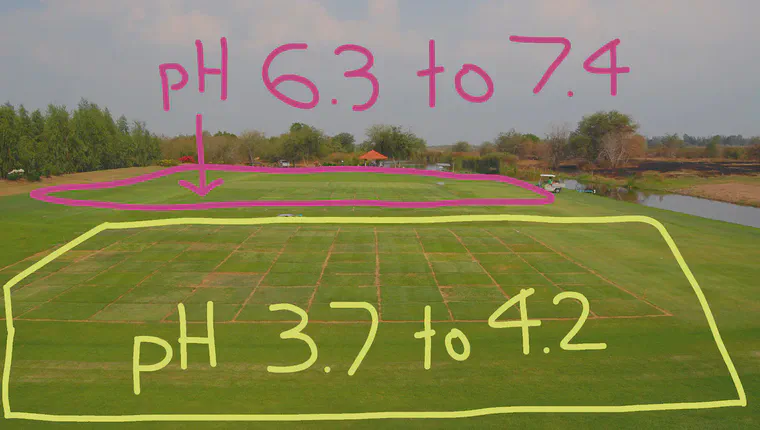Why it is not important to maintain soil pH between 6.5 and 7.0
I read a post on the Golfdom Daily about soil pH in which it was suggested that it was important to maintain soil pH in the range from 6.5 to 7.0. The reason was given “that most nutrients (whether applied or in the soil) are readily available to the plant in this pH range. Outside of this range many nutrients (both macro- and micro-nutrients) are not readily available to the plant.”

That dogmatic statement about pH is not correct, but one will hear it repeatedly. The next time you hear that, please remember this.
The truth is that most turfgrass species grow well, with ample nutrient availability, in a pH range from 5.5 to 8.3. There can be excellent turf even with soil pH less than 5.5.1
So what is the real story about soil pH? The superb article Farming with Acidity by Sumner and Yamada explains just what the issues are. They start by explaining that the supposed optimum range for soil pH is an artifact of the soils and cropping systems used when the pH meter was first introduced:
In many parts of the world notably the US Midwest and Europe, soils have been limed to a particular target pH (6.5–7.0) according to the crop. Because plants do not directly respond to the activity of H+, it is pertinent to enquire why this approach to liming has enjoyed such widespread popularity. Among the reasons, the original near-neutral pH of many of the soils was no doubt a consideration and the use of acid-sensitive legumes to supply N in rotations in the early stages of agricultural development also played a part. The introduction of the pH meter at about the same time as N fertilizers found widespread popularity replacing legumes in rotations facilitated the measurement of soil acidity and removed the focus from the real problems of soil acidity, namely, toxic levels of Al3+ and Mn2+and deficiencies of nutrients such as Ca, Mg, N, S, P and Mo. Even after legumes disappeared from the rotations, the high target pH values were retained.
The article reviews scores of experiments and concludes that:
There seems to be little merit in liming soils to pH values greater than 5.5 at which exchangeable Al is effectively neutralized. Additional benefits accruing to this strategy are: (a) reduced costs of lime, (b) reduced nitrification and attendant pollution of surface and ground waters, (c) control of diseases and pests, (d) improved infiltration and water use efficiency, and (e) increased nutrient availability.

In fact, at the Asian Turfgrass Center’s research facility in Thailand, many grasses were maintained as a fine turf in soil with a pH of 3.7. Compared with the same variety grown at pH 7, we could find no visual difference. ↩︎